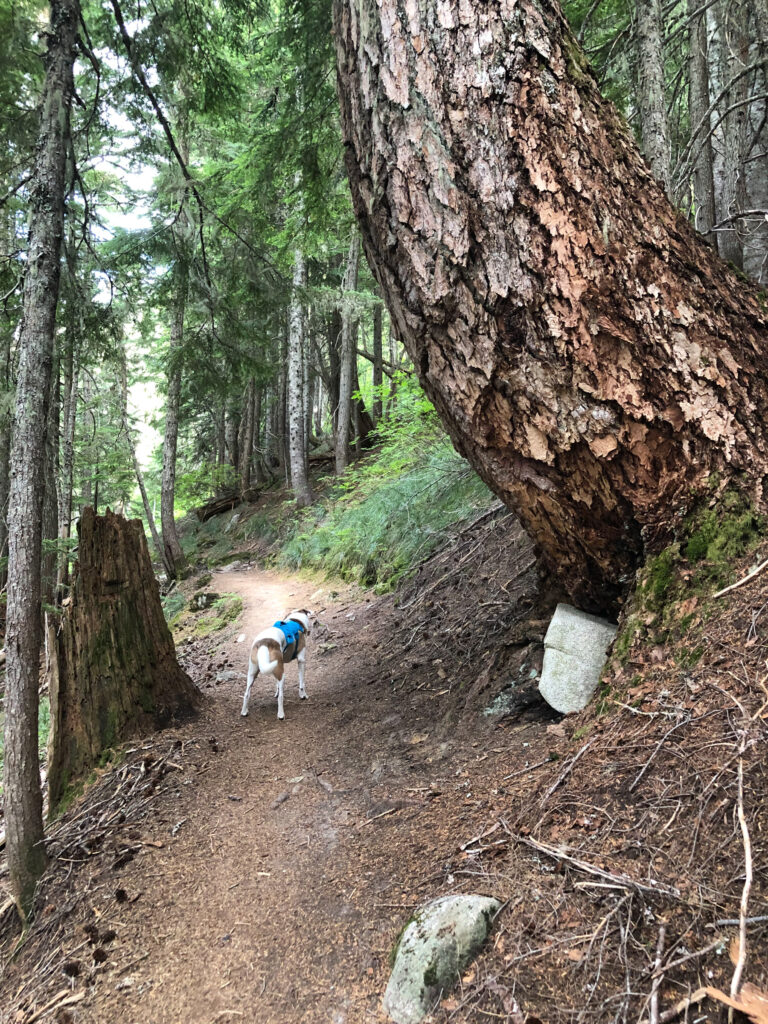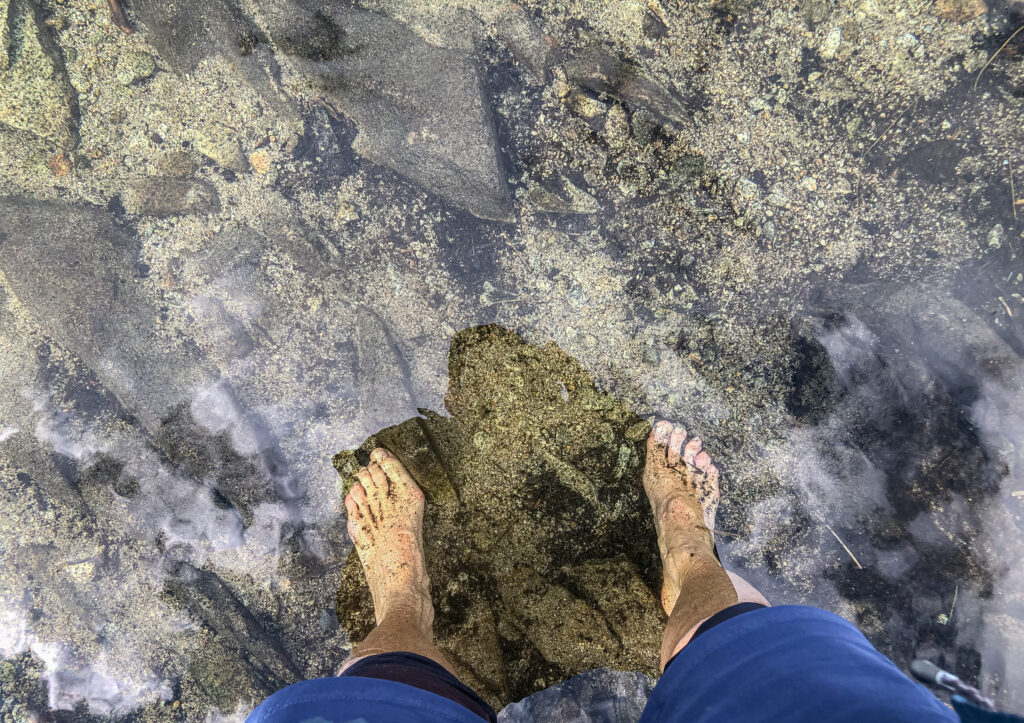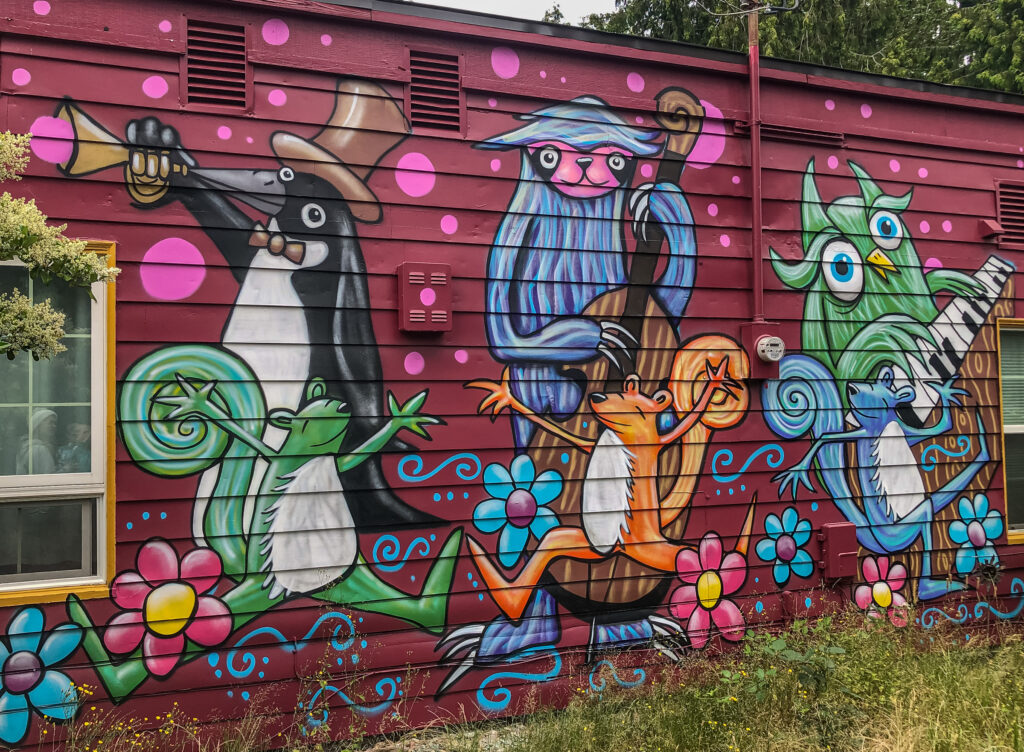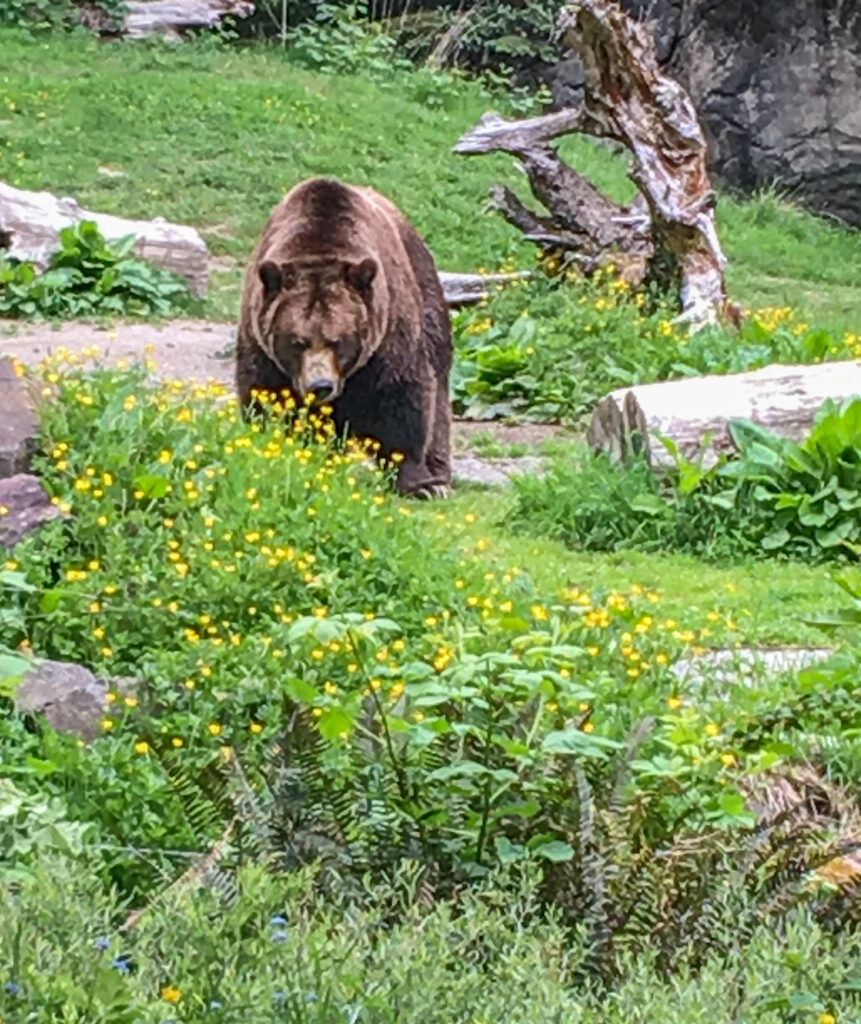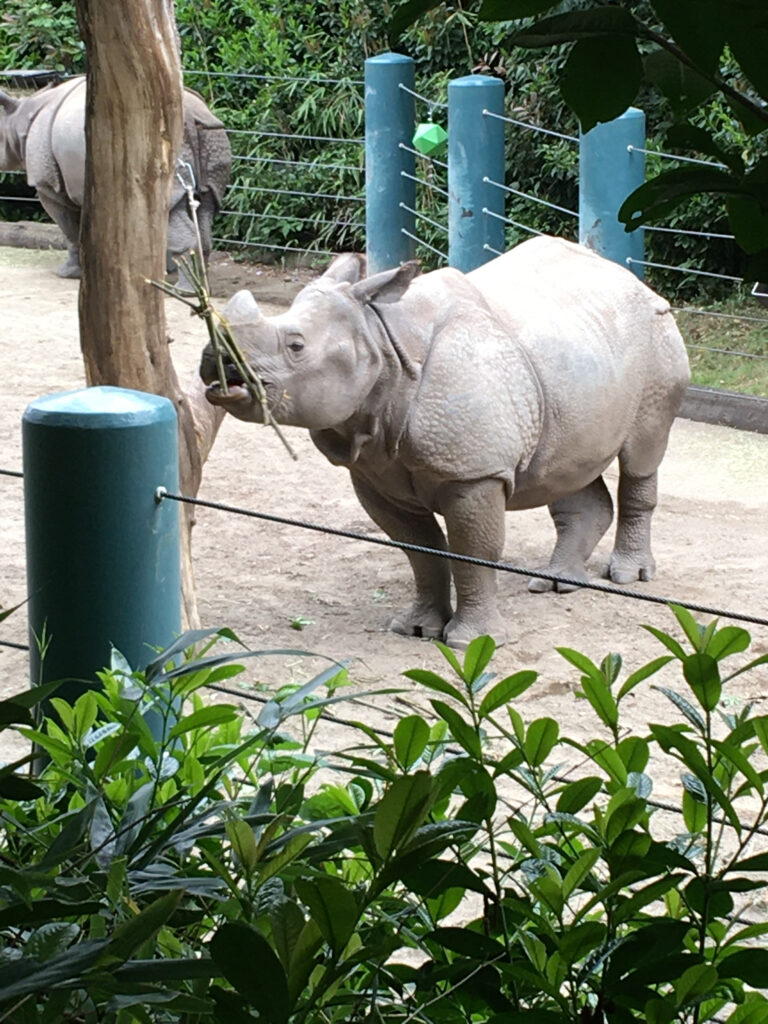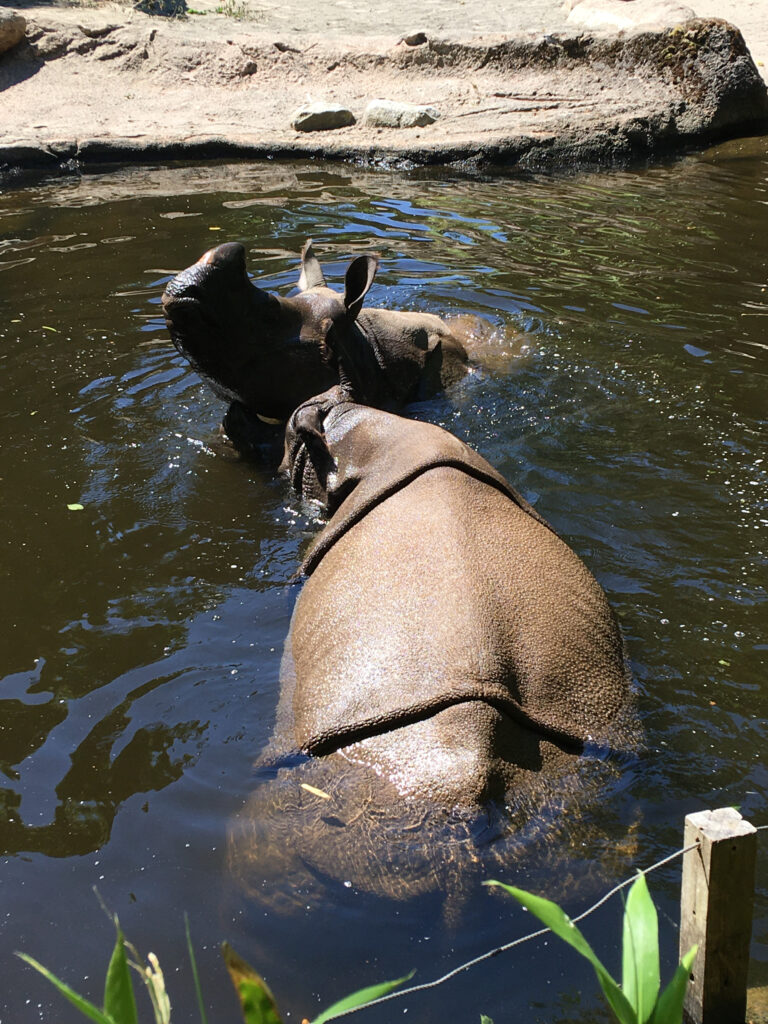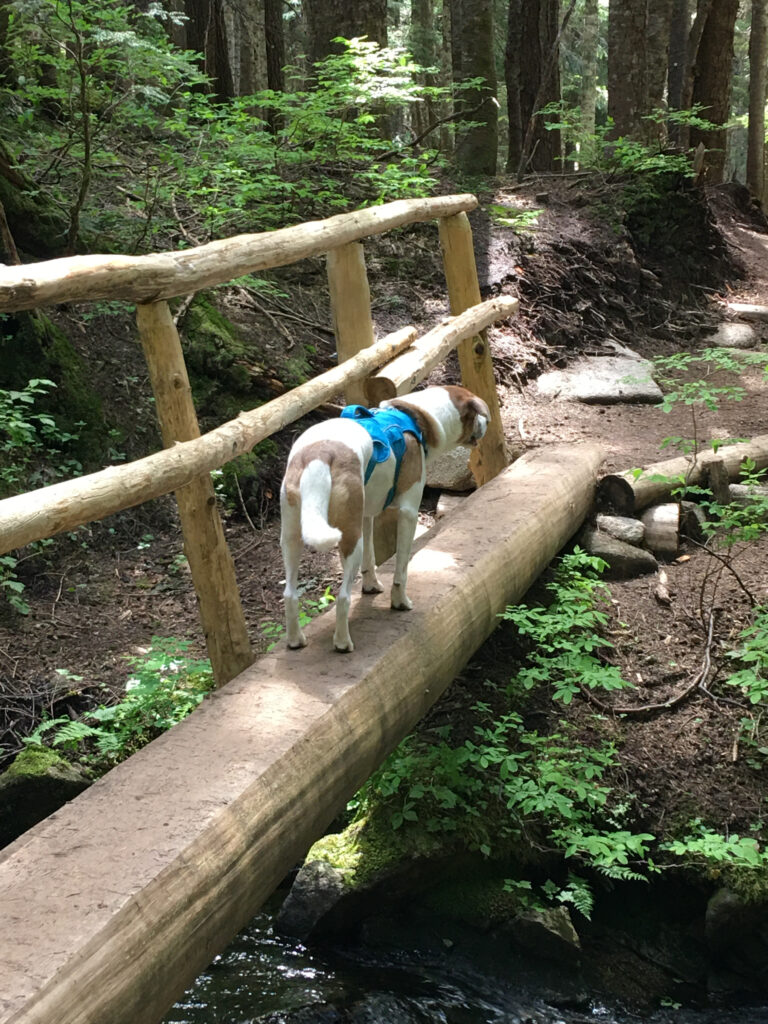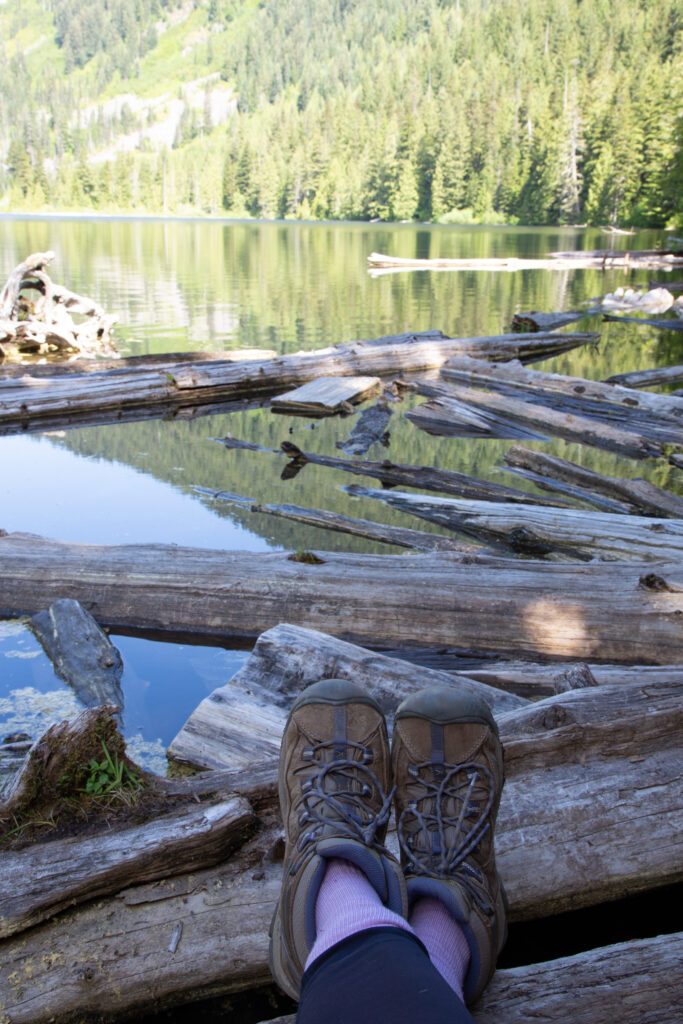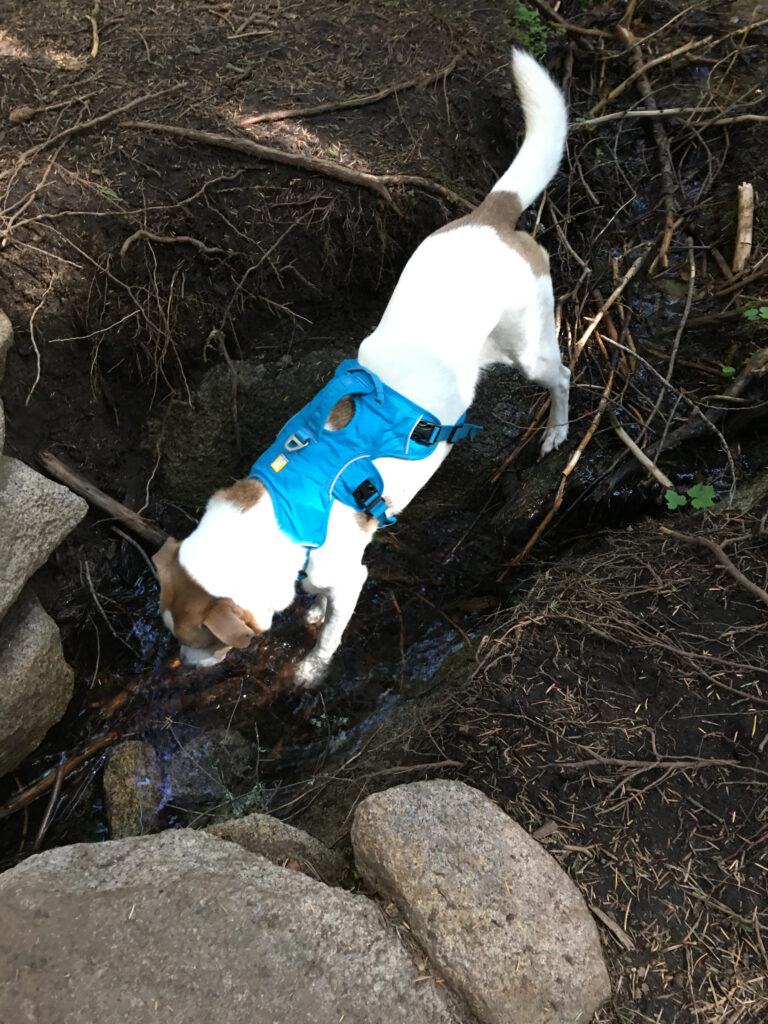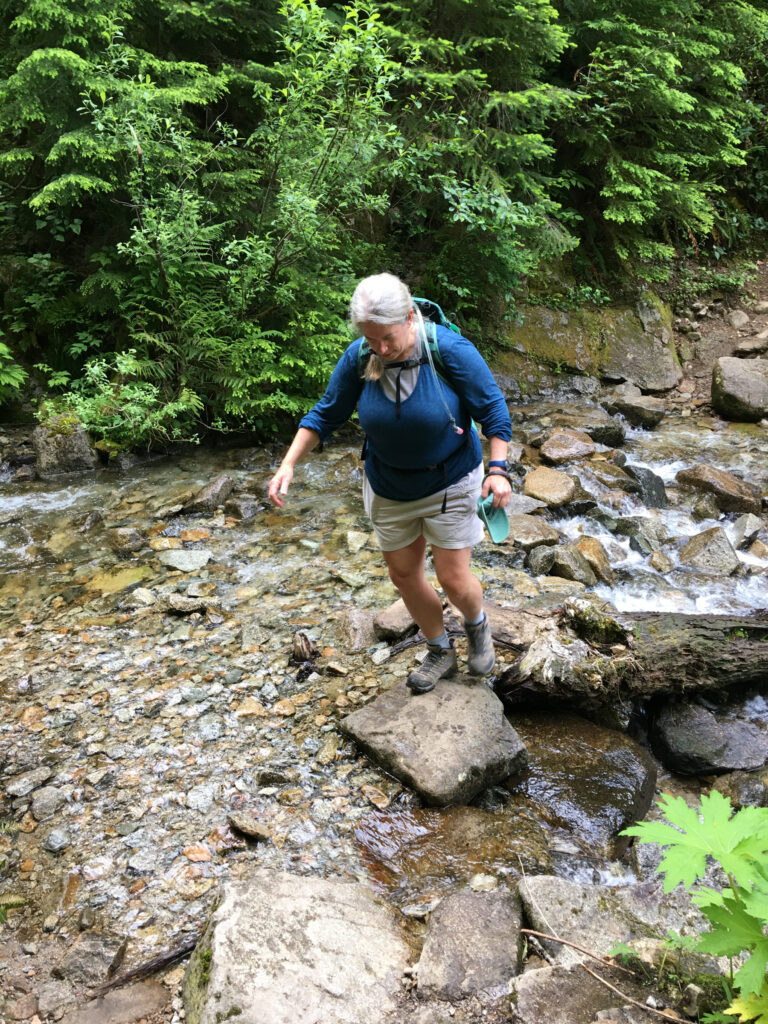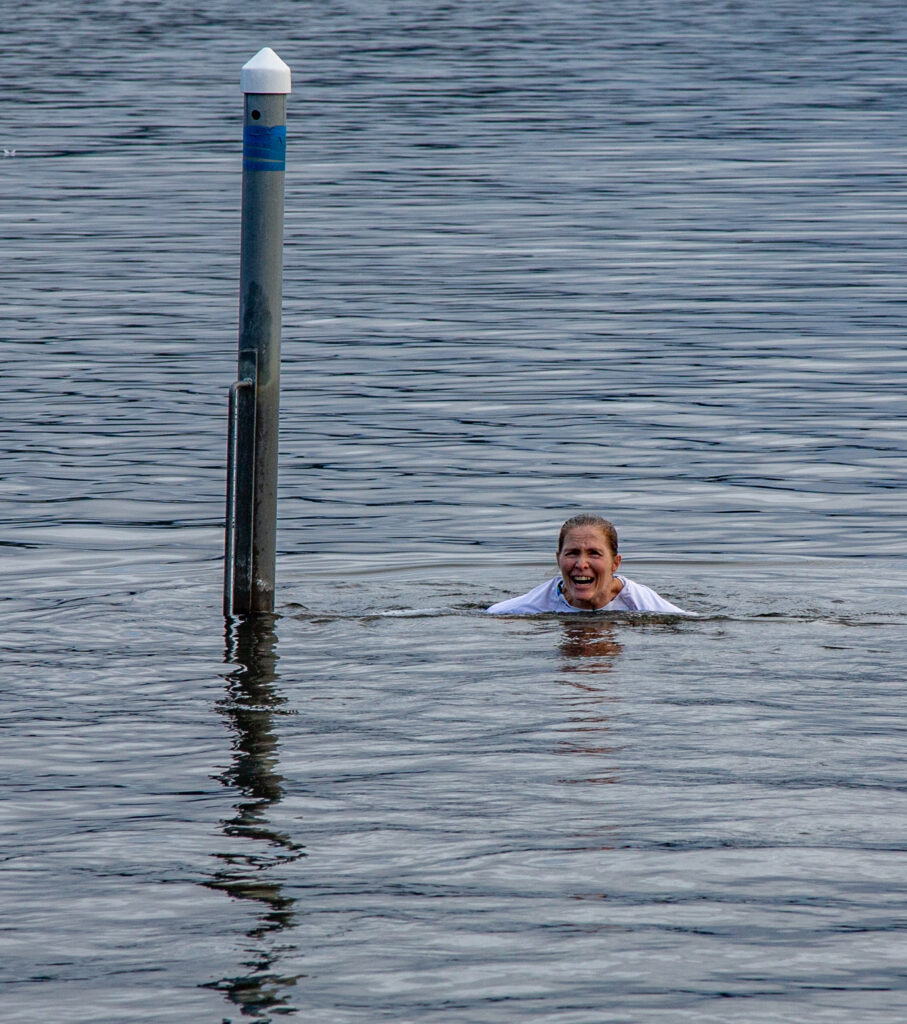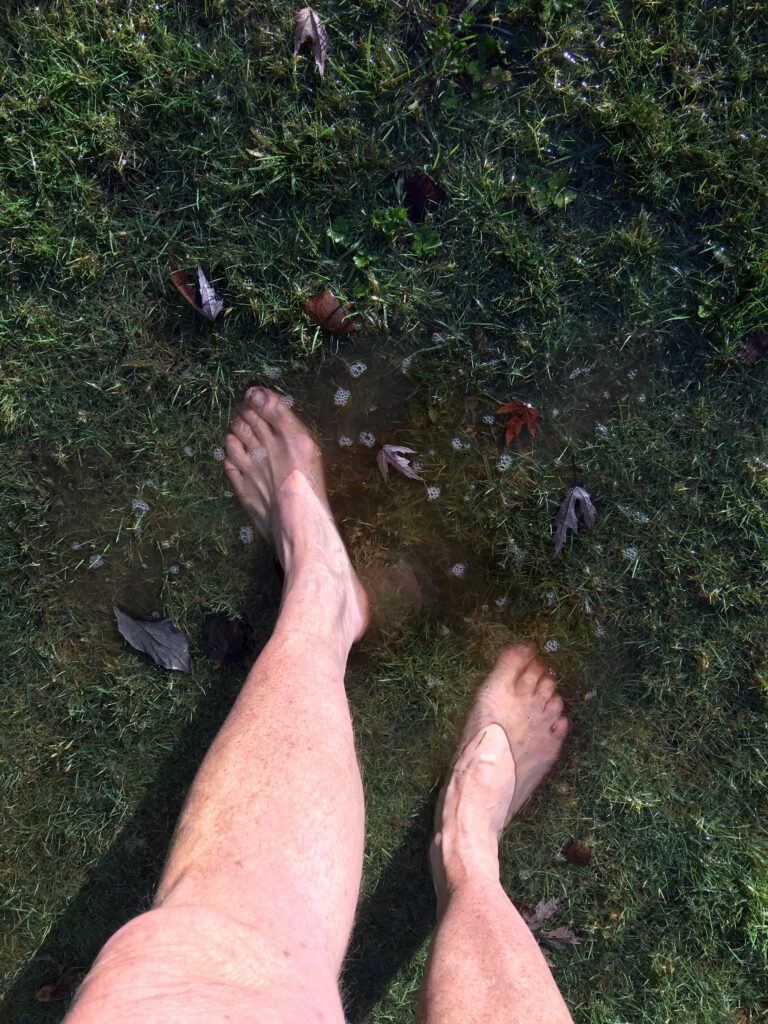A year ago, I met G. on the trail to Kendall Katwalk. He was traveling at roughly my pace. We struck up a conversation and hiked several hours together before Ajax and I reached our turn-around time. On August 13, 2022, we met the same hike, same trailhead, to provide moral support. He was over halfway through his quest to hike the PCT northbound from the Oregon-Washington border to Stevens Pass. So, with fresh fruit and doggie kisses, we escorted him to Ridge Lake and Gravel Lake on the final leg of his journey.

Lessons Learned Along Kendall Katwalk
“Nature is not a place to visit, it is home.” — Gary Snyder
No matter how many times I return to a favorite trail, I nearly always see something new, experience something different, or find that conditions have changed seasonally. But always, I feel comfortable simply being myself. Isn’t that what home is supposed to feel like? As I hiked the 7.5 miles back to the car, I added a reason to repeat that I hadn’t experienced before: to celebrate.

Repeat to Inform
The first reason to repeat a hike is to provide information. I often recommend that clients find a trail to return to monthly. Repeating such a hike can provide insight into how your workout program is affecting your fitness. Whenever I visit Mt. Washington, arguably my favorite early season hike, I know exactly how long it takes to reach my first clothing break, “peeing rock,” the overlook, the sign to the Great Wall, the creek, the lake, and the turnstile.
Natural markers provide motivation and challenge while boosting my confidence, especially if I am alone. What’s more, finding a favorite tree, boulder, or vista is sort of like running into an old friend. Who says friends can’t be inanimate objects?

Repeat to Enjoy Seasonal Novelty
Another reason to repeat a hike is for sheer enjoyment. Kendall Katwalk boasts gorgeous views of the Snoqualmie Pass mountain peaks (as well as Rainier on a clear day.) Splendidly colored iron-rich rocks like Red Mountain contrast with blue skies, snowy white chutes, and gray granite. Alpine lakes poke up around every third bend. Wildflowers beckon.
Mammal-watching (dogs, marmots, humans, and picas, to mention a few) is unparalleled. And if you like dramatic exposure, the Katwalk delivers. While the trail can be hot and dusty this time of year, we were fortunate. We did the entire fifteen-mile hike this year without my dog overheating like last year. Win!

Repeat to Gain Confidence
Third, by letting yourself get to know a trail well, you can branch out and explore side trails. Such is the case for me on Tiger Mountain. You can also engage in deep philosophical conversations with fellow hikers and remain confident that you’ll be able to get back to the car.
Sometimes on new trails, I don’t know what to expect. If I’m worried about getting back to town by a certain time, I almost always choose a destination I know well, so I don’t run the risk of getting lost. While I enjoy novelty and exploring new places, it throws me off my pace because I’m focused on making sure I know exactly where I am.
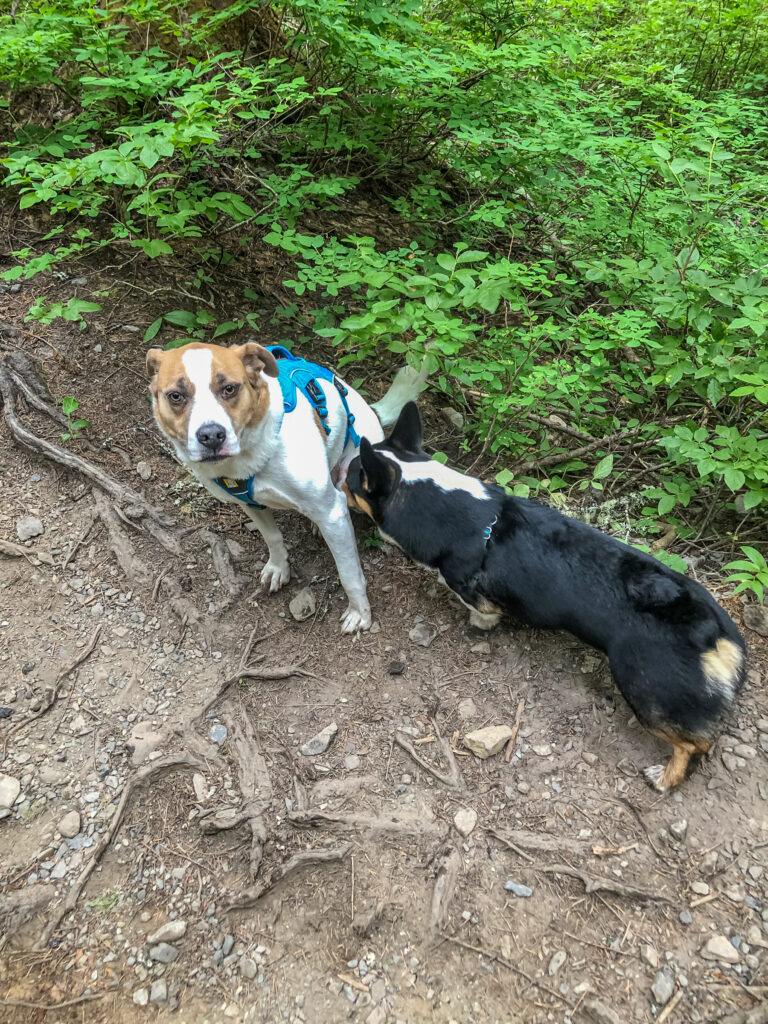
Repeat to Celebrate
But on this trip, my biggest reason to repeat the hike to Kendall Katwalk was that it’s where our training journey started. I wanted to provide moral support and encouragement for my client in pursuit of such a big goal. We’d both encountered challenging obstacles in the past year, joking at times that we were one-upping (one-downing?) each other. He’d proven to me that he had what it takes to succeed. I willingly took on the role of cheerleader in the final months.

When I handed him a nectarine at our first rest stop after about 3.5 miles, I thought he might cry tears of happiness. And at our turn-around spot at mile 7.5 at Ridge Lake, I surprised my client with a peach. Ajax downed his lunch. My reward was taking off my hiking boots to soak my feet.
A Tribute to Success
Turning around at Ridge Lake felt bittersweet. G. still had nine miles to hike, and I faced a long dusty trail with Ajax. And about three hundred other backpackers, dogs, day hikers, and trail runners. Maybe one day I’ll become a trail angel, carrying gallons of orange juice or dozens of pieces of fresh fruit to hikers on remote trails. One thing is clear, though. No matter how much you doubt yourself, the best thing you can do is take that next step. Have someone who believes in you give you a pep talk (hey, that’s me!) Then get out there and try it. You may surprise yourself.





